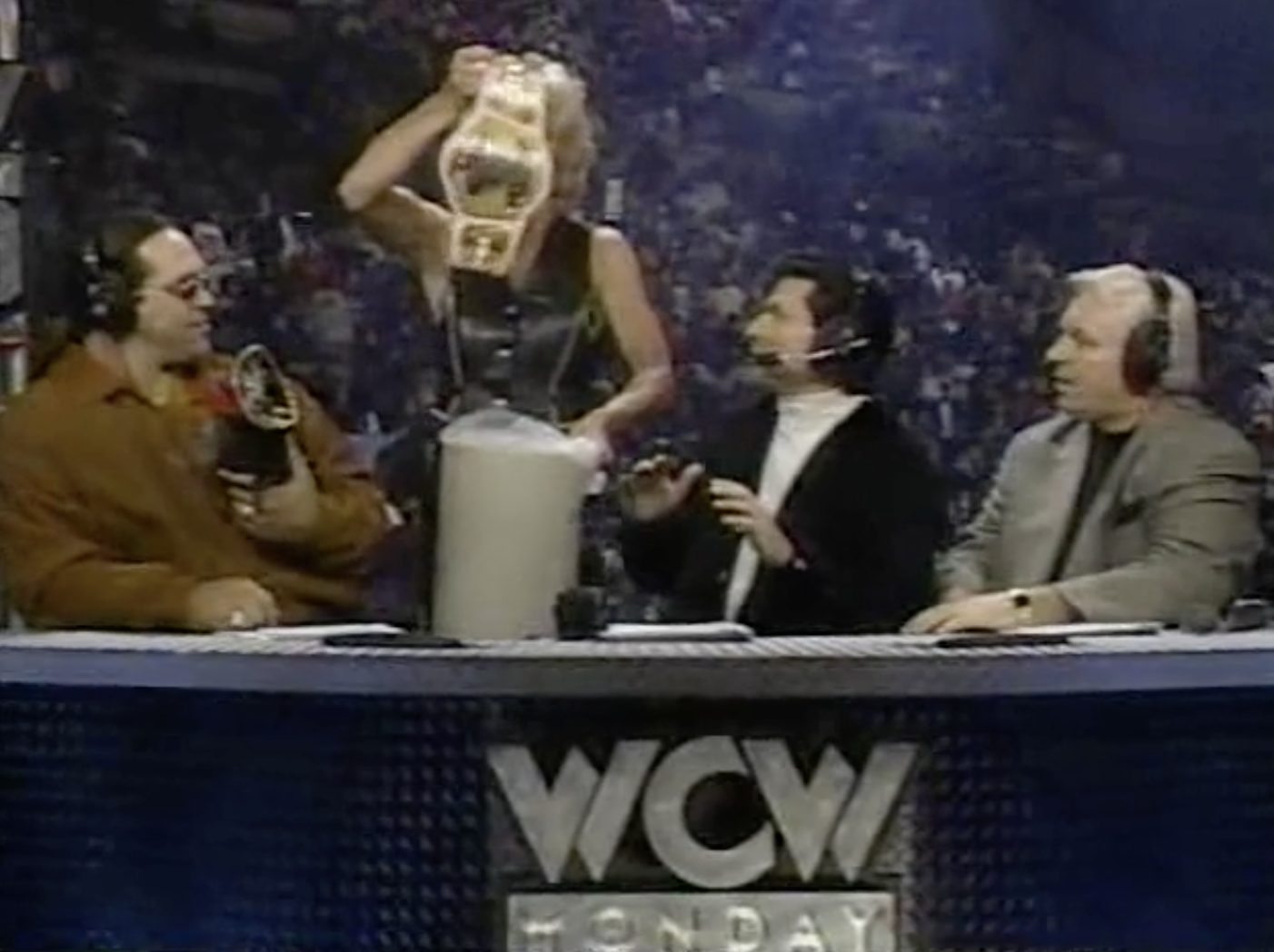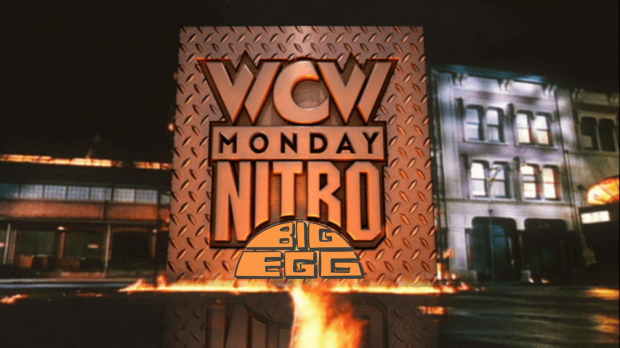The Last Nitros of 1995 Shock & Go Down Smooth | WCW Monday Nitro 12/18/95 & 12/25/95
Madusa drops the belt in the trash. The Giant goes for a frog splash. Lex Luger faces The American Males. This. Is. Wrestling.

One of the reasons I decided to review every wrestling match that aired on WCW Monday Nitro is because it is taken for granted/as rote fact that Nitro changed the business. It did, obviously, but the way it gets flattened out to easy marketing points like the nWo and the cruiserweight division doesn’t quite do the show’s impact justice, nor does the reflexive way that looking at the fact that Nitro was live invites one to imagine the competitive disadvantage that put the WWF at until Raw followed suit. But I am not interested in marketing or the World Wrestling Federation. I am interested in professional wrestling as a televised product. In my opinion, the three most significant developments in the last 40 or so years of televised American wrestling took place over a five year span in the 1990s, and we’re still living with the ramifications of all of them today. They are, in chronological order:
- The 1993 debut of Monday Night Raw, which, in replacing Prime Time Wrestling’s studio-show format, began a gradual, industry-wide transition to presenting weekly TV in a fashion similar to PPV and other supercard-style events.
- The 1995 debut of Monday Nitro, which prioritized live broadcasts over pre-recorded cards. Its use of marquee matches on “free” television (cable costs money, y’all) wasn’t new (Saturday Night’s Main Event and Clash of the Champions existed), but the increased speed with which WCW and later WWE churned through those matches was.
- The 1997 debut of the Titantron, which doomed us to a kind of professional wrestling where half the show could take place backstage, away from the ring and apart from the live audience, even if that half of the show didn’t involve “Stone Cold” Steve Austin.
Nitro’s being live is central to its mythos, and not because they could spoil Raw at their leisure. The debuts of Lex Luger on the first episode and Madusa on the last live Nitro of 1995 were taboo-breaking, paradigm-shifting acts, brilliant and daring stunts that only served to reenforce the seemingly lawless nature of a live wrestling broadcast, which culminated in Scott Hall’s 1996 debut. Bischoff’s vision for Nitro was bold, but didn’t require a huge leap: watch an episode of WCW Saturday Night or a WCW PPV from the pre-Nitro era and you’ll see a team that’s often in keeping with the real sports broadcast style of the MLB, NBA, and other leagues that aired on Turner networks. The particular genius of Nitro, which is hard to recognize because Eric Bischoff himself is one of the worst play-by-play commentators in the history of the sport, was to take further inspiration from shows like Inside the NBA and the NFL on Fox Halftime Show, where the desk and the people behind it were as important to the brand as the players on the court or field.
This being wrestling, which can happen anywhere, the Nitro desk became as important as the ring so far as settings are concerned. The way Madusa flits in at the beginning of Nitro and upsets the balance of the whole wrestling world? That doesn’t happen without Nitro’s combination of live broadcasts and its show-within-a-show format. Don’t care about that sort of thing? No problem, boss: we’ve got Ric Flair vs. Eddy Guerrero coming right up.
Next Week: The 288-sided die takes us to the summer of 1999 for episode 182 of WCW Monday Nitro, 8/3/99! This episode of Nitro is clocking a 1.8 rating on Cagematch and features a 10 minute match between Bret Hart and Van Hammer. Even better, it's the three hour Nitro that doesn't have any wrestling for the first hour of the show. Time to die.


